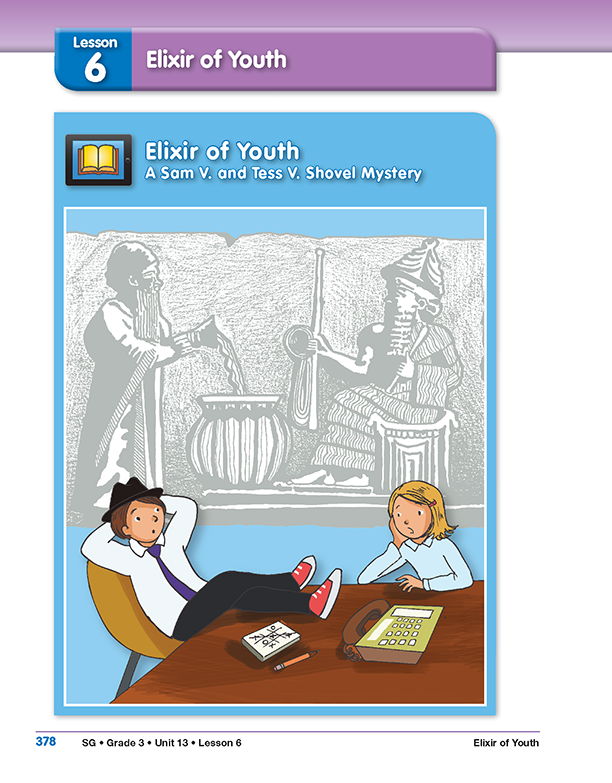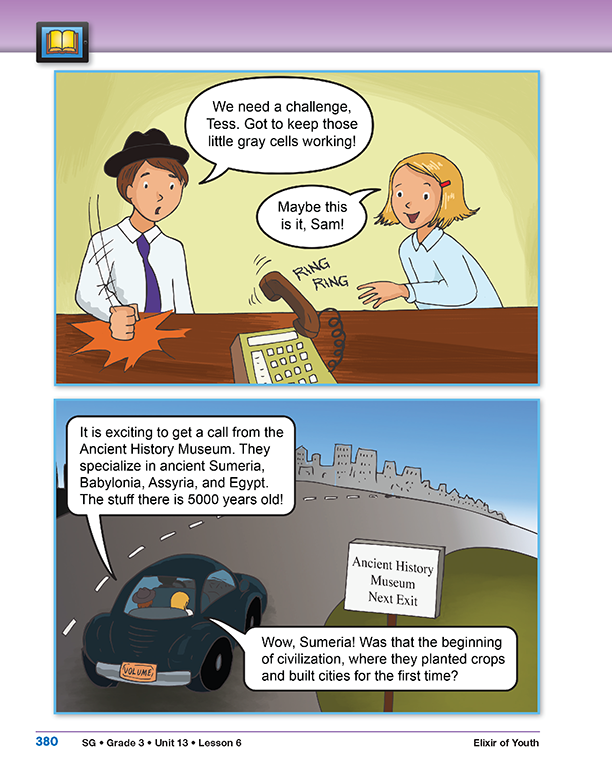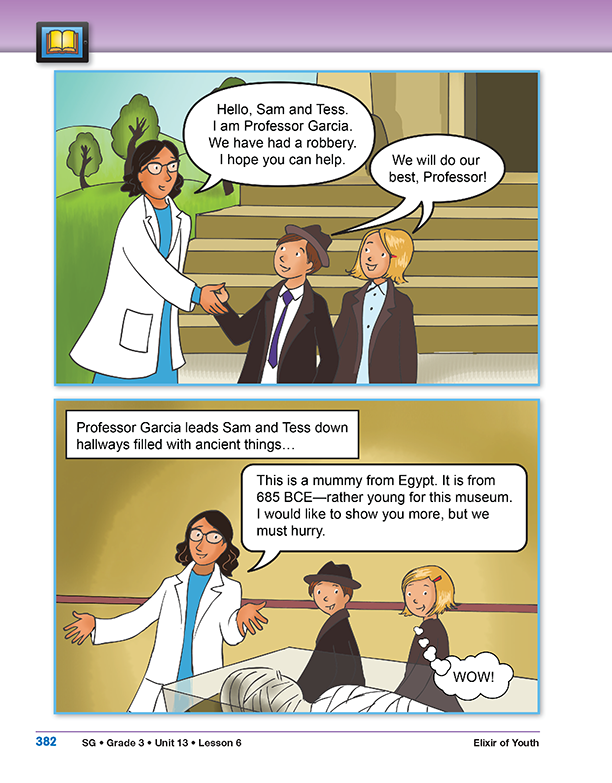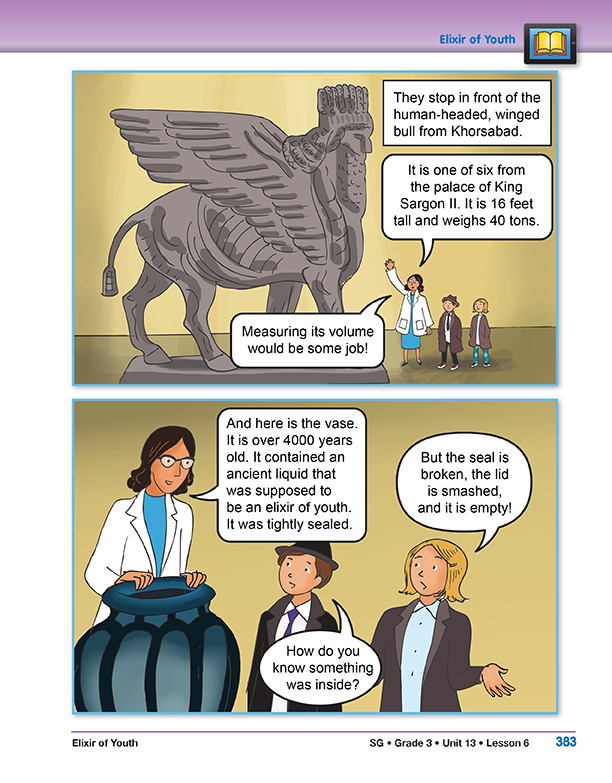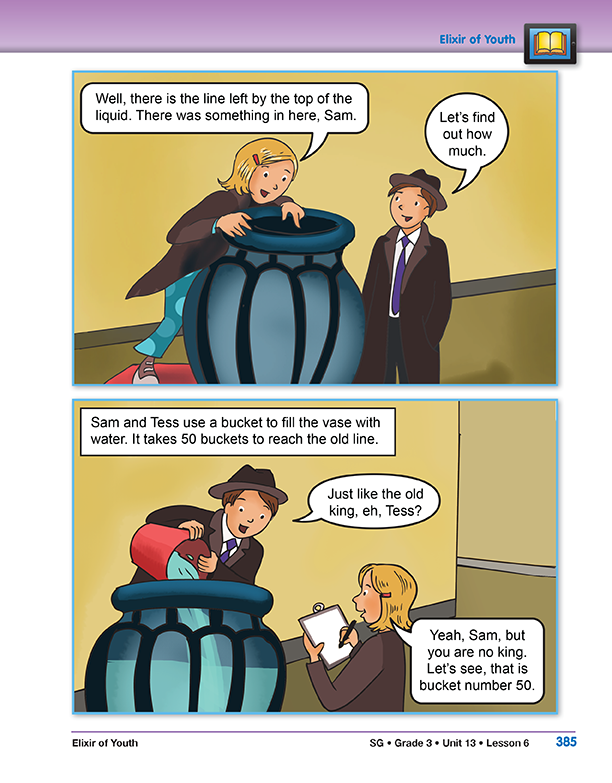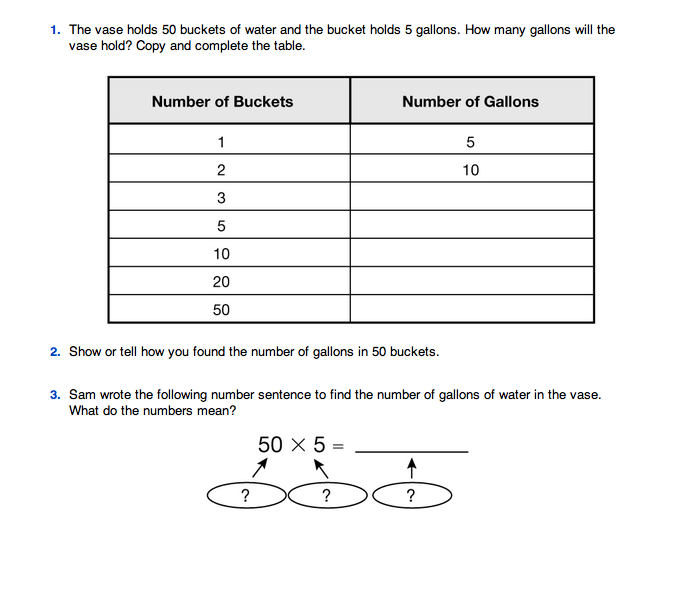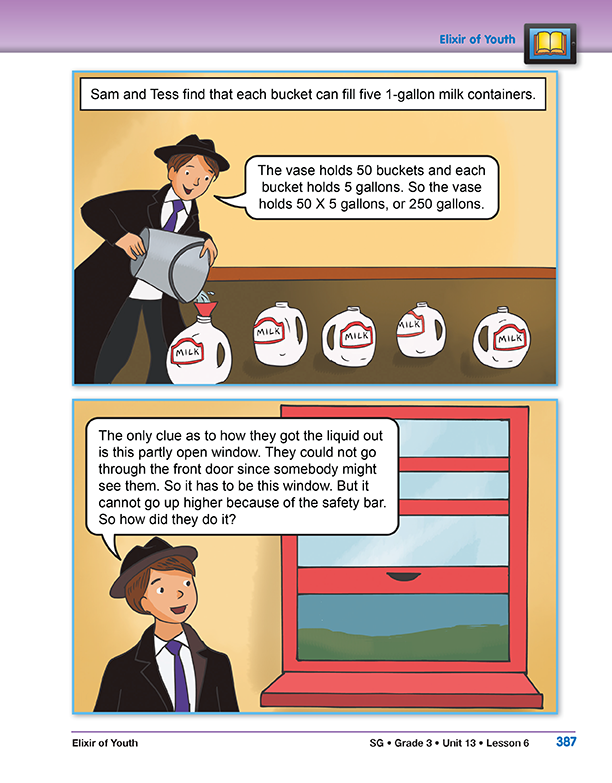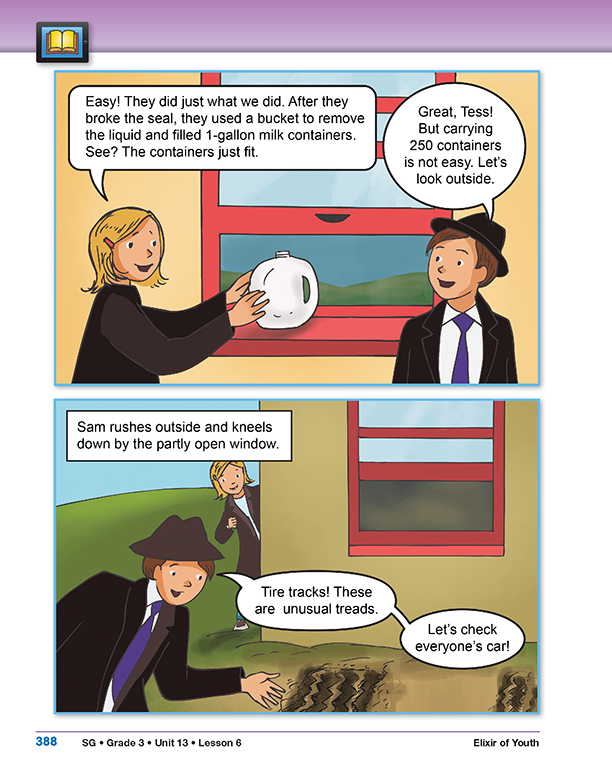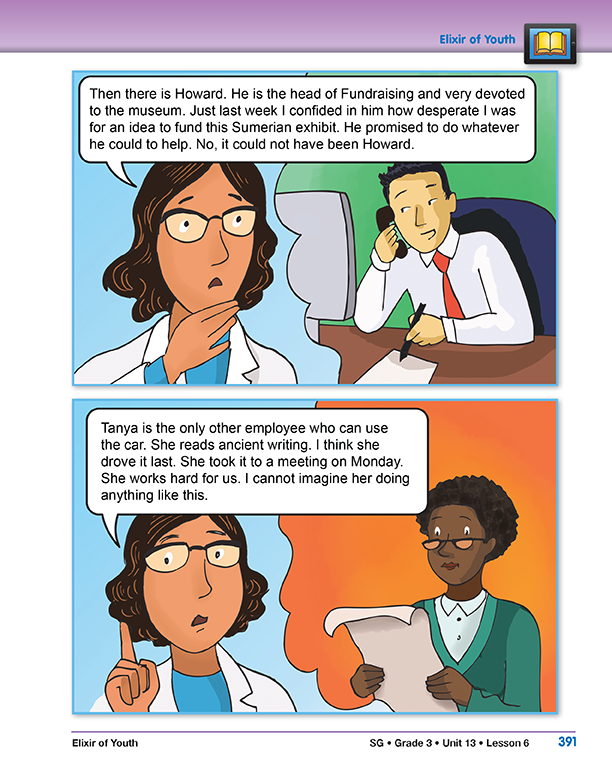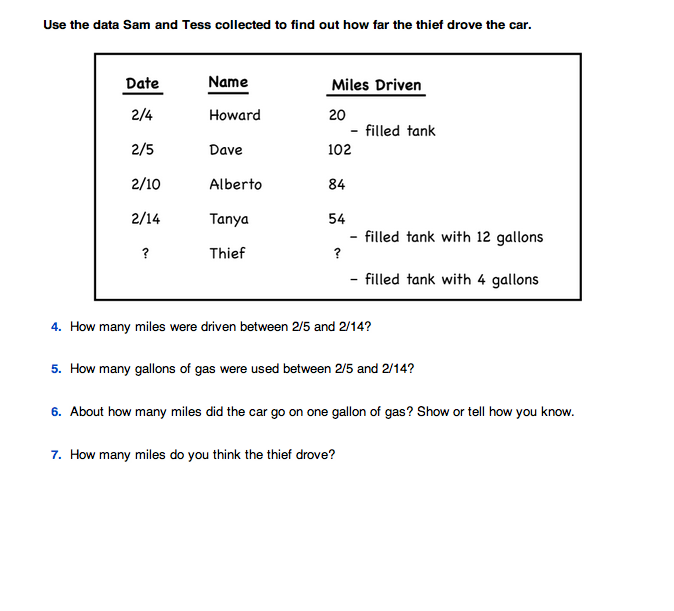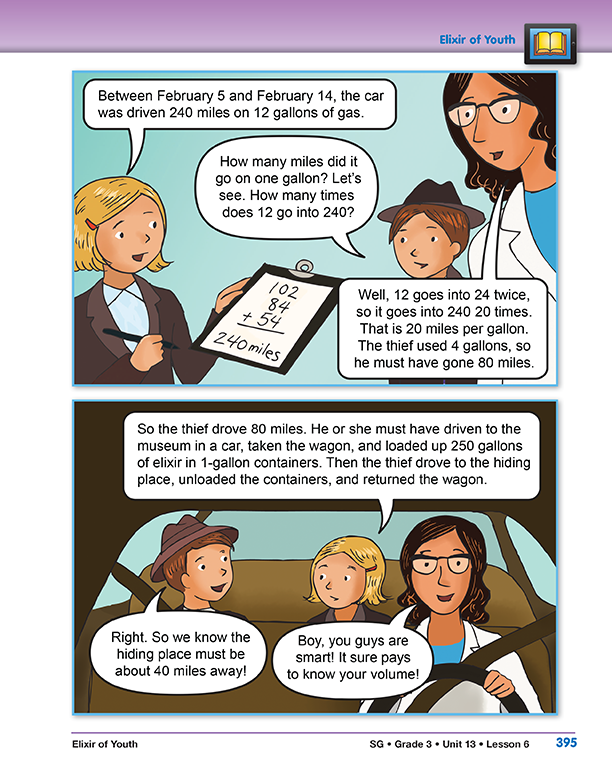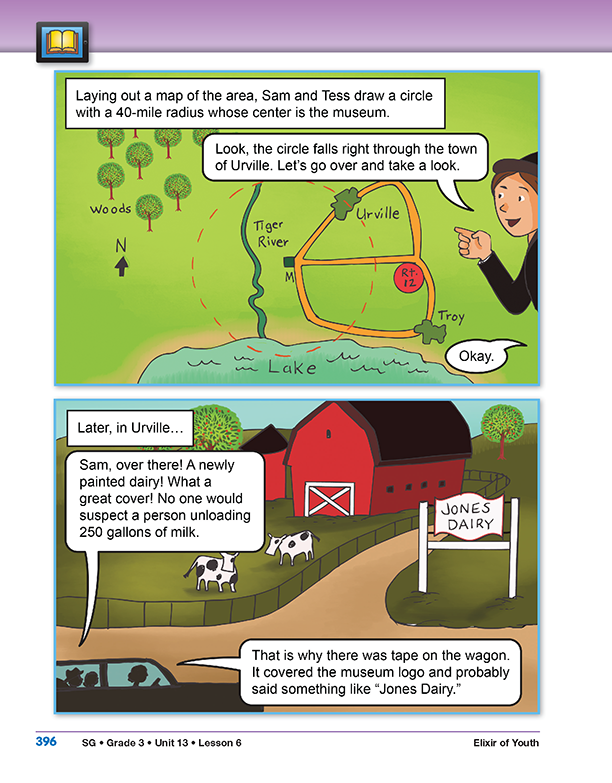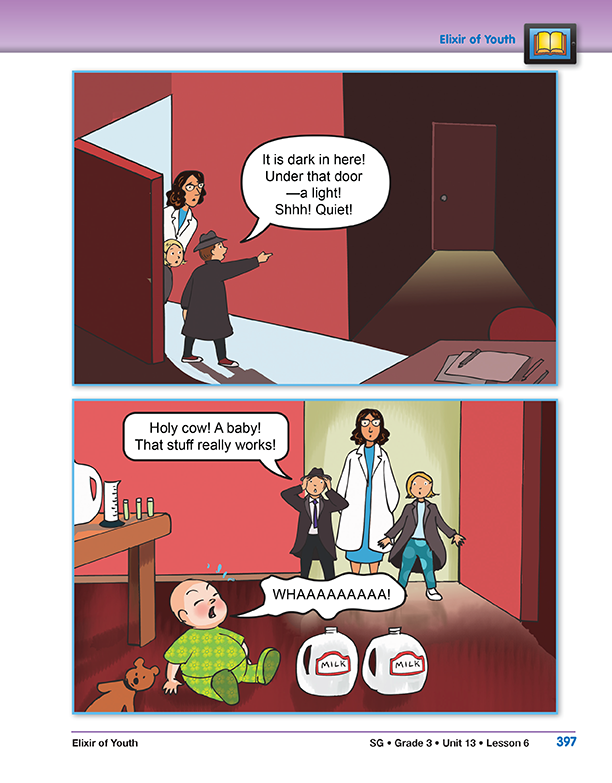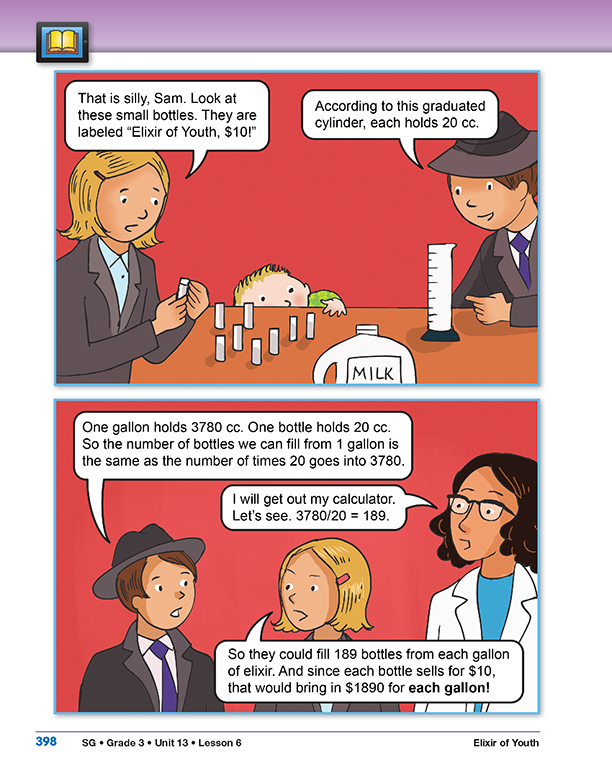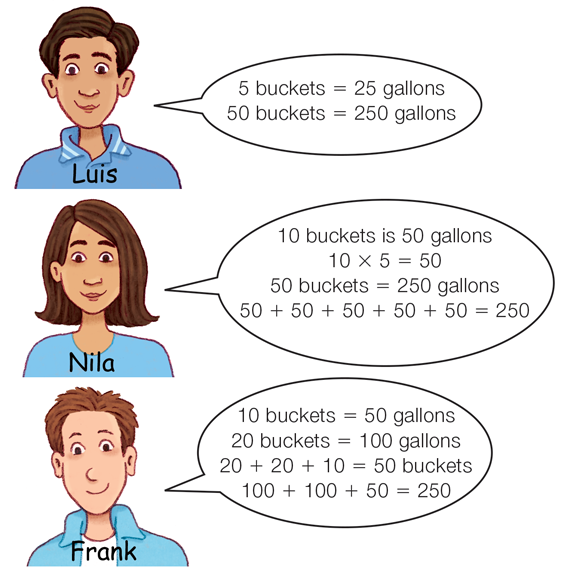Set the Stage for the Story. Display the title page of the Elixir of Youth story in the Student Guide.
Discuss the images on the title page to activate prior knowledge using the following prompts:
- What do you think the story Elixir of Youth is about?
- What do you think the mystery is?
- What do you think is going on in the picture?
- What is that big thing in the middle of the picture? (a vase)
- What types of things are stored in vases? (flowers, water, or oil)
- Who is pictured on the cover? (Sam and Tess are pictured near the bottom of the page. It looks like a king and someone who works for the king in the top of the picture. The image is from a long time ago.)
Use the following discussion prompts as you read the story together as a class.
Page 380
- What modern countries include the regions mentioned: Sumeria, Babylonia, Assyria, and Egypt? (Iraq, Kuwait, Iran, Turkey, and Egypt)
Show students a map of the regions of Iraq, Kuwait, Iran, Turkey, and Egypt.
Page 382
- How long ago was 685 BCE? (BCE means Before Common Era; Possible response: 2015 + 685 = 2700 years ago)
Page 383
- If an elephant weighs four tons, about how many elephants would it take to equal 40 tons? (about ten elephants)
- If the vase were exactly 4000 years old, then in what year would it have been made? (Possible response using 2015 as the current year: 1985 BCE)
- What is an elixir of youth? (a liquid that restores youth to anyone who drinks it)
Page 385
- Have you ever seen a liquid leave a line on the side of a container? (Answers will vary, but the infamous ring around the bathtub is a good example.)
- How did Tess and Sam measure the volume of the vase? (They filled the vase with buckets of water and counted the buckets.)
To help students visualize how Tess and Sam measured the volume of the vase, demonstrate the process with a large container and a small container. This measuring process will serve as a context for volume explorations in the rest of the unit.
Refer students to Question 1–3 in the Student Guide.
- The vase holds 50 buckets of water and the bucket holds 5 gallons. How many gallons will the vase hold?
Tell students to complete Questions 1–2 to help them answer this question. Display the table in Question 1 with student responses. Look for a variety of strategies students used to answer Question 1. Ask a few students to share how they found the number of gallons in the vase. If students do not contribute a reasoning strategy introduce it as your strategy. There are several ways to use reasoning. See Figure 1 for some examples. Summarize this problem by discussing and answering Question 3. Sam's number sentence represents the problem even if students cannot use an algorithm to solve 50 × 5.
Page 387
- How many gallons are there in 50 buckets if each bucket holds 5 gallons? (250 gallons)
Show students a gallon jug to help students visualize one gallon. Showing students five of the gallon jugs will help them visualize the volume of the bucket Sam used to fill the vase.
- Did Sam's solution match our solution of 250 gallons?
- How did Sam and Tess determine that a bucket held 5 gallons? (He filled the bucket with water and poured the water into gallon jugs.)
- Is there another way to do this? (Possible response: Yes, Sam could have filled a gallon jug and poured it into the bucket and repeated the filling and pouring until the bucket was full.)
Page 388
- How do Sam and Tess know there were 250 milk containers? (They know because there were 250 gallons of liquid in the vase and each milk container holds one gallon.)
- Do you think the thief transported the elixir on a bike? in a car? truck? (Possible response: a truck, that is a lot of jugs, but maybe a car with a trunk.)
Page 391
- Who do you think might be the thief? Why? (Answers will vary.)
Page 393
- If Tanya was the last to use the museum station wagon, and if she filled it up when she finished, then why is the tank in the station wagon not full now? (The tank is not full because the thief used the car and didn't fill it up again.)
- How far do you think a car could go on 4 gallons of gas? (Answers will vary. At 12 miles per gallon, 4 gallons would last 48 miles; at 25 miles per gallon, 100 miles.)
Solve Mystery Problems. Display and refer students to Questions 4–7 in the Student Guide. Tell students that it is now their turn to help Sam and Tess solve the mystery. Help students interpret the data before Question 4. This is a combination of the travel record and Professor Garcia's descriptions of when the gas tank of the car was filled. Once student have an understanding of the data, ask partners to work on Questions 4–7.
Page 395
Continue to read the story and compare Tess's solution to the student solutions to Question 7.
- How many miles would the museum station wagon go on 2 gallons? On 5 gallons? On 12 gallons? (40, 100, and 240 miles, respectively)
- How do Sam and Tess know the thief's hideout is about 40 miles away from the museum? (They figured out that the thief drove a total of 80 miles. Since the thief had to get to the hideout and back again, he or she must have driven 40 miles each way.)
Page 396
- What does the circle on the map show? (The circle indicates all the places that are within a 40-mile radius away from the museum at the center of the circle. The radius of a circle is the distance from the center to the outside of a circle.)
Page 397
- Why did Sam say, “That stuff really works!”? (Sam thought the thief had turned into a baby from drinking the elixir of youth.)
- Is there really any such thing as an elixir of youth? (No—not yet, anyway.)
Page 398
- What does cc mean? (cubic centimeters)
- Do you think a cubic centimeter is smaller or larger than a gallon? (a lot smaller)
- Why? (Possible response: There are a lot of them in 1 gallon according to Sam.)
- What do you think a graduated cylinder is? (a tube used to measure volume with small units like cubic centimeters or cc)












